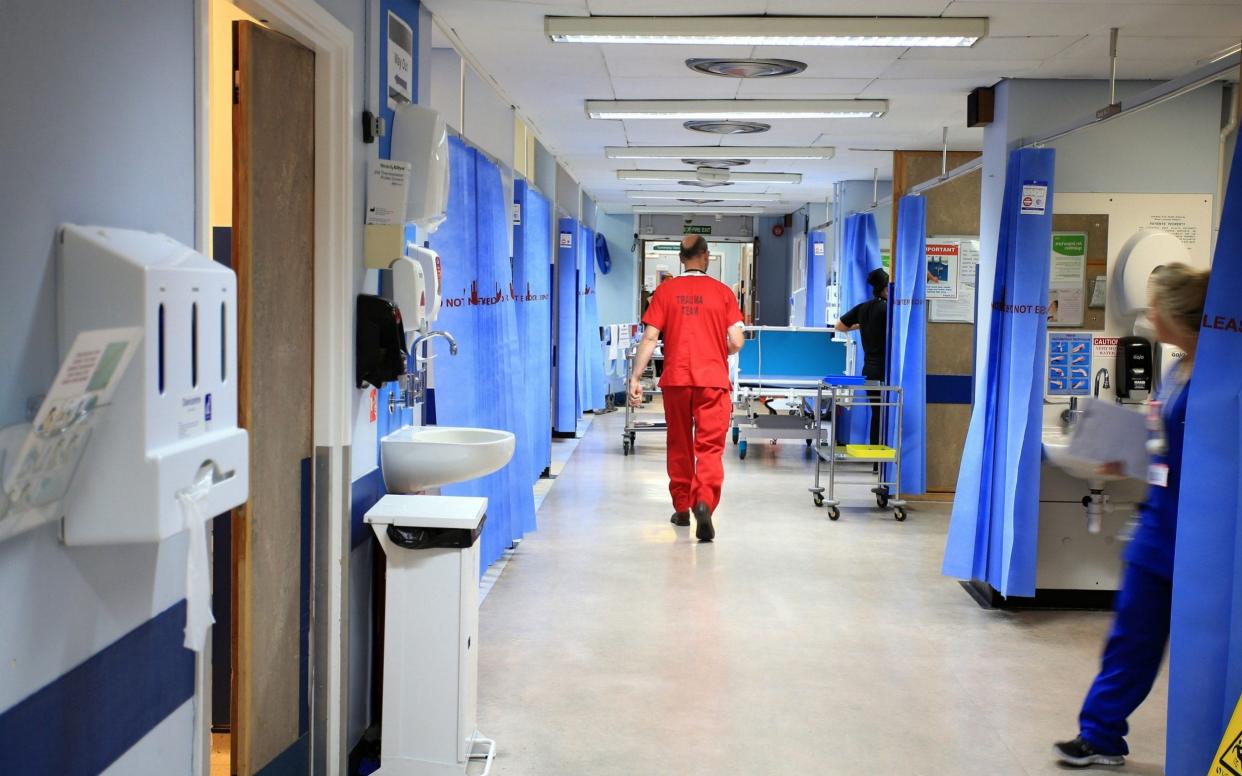‘Trolley waits’ in A&E hit record high as NHS crisis deepens

A record number of patients are waiting more than 12 hours on trolleys in A&E, as the latest official figures reveal the crisis in emergency care.
Last month, more than 5,000 people were waiting more than 12 hours in emergency departments in England after a decision was made to admit them, commonly known as “trolley waits”.
The previous high was January 2021 when it was 3,825.
Patients waiting more than four hours was also the highest on record last month topping 104,875 - almost 5,000 higher than the previous record in January 2020.
Waiting times for hospital treatment have risen to a new high for the 15th consecutive month, with 5.7 million people waiting to start routine hospital treatment at the end of August 2021.
Sajid Javid, the Health Secretary, has previously said the waiting list could top 13 million.
And those waiting two years to begin treatment have reached almost 10,000, the data from NHS England show, more than three times the 2,722 people waiting two years in April.
NHS England has told hospitals to eliminate all waits of more than two years by March 2022.
The number of people having to wait more than a year to start treatment fell for the fifth month in a row to 292,138.
The Royal College of Emergency Medicine (RCEM) has warned the “bleak” A&E data show “dangerous crowding” has returned to emergency departments.
Pressures on urgent and emergency care
Dr Katherine Henderson, the president of the RCEM, said a lack of available beds across hospitals is causing patients to become stranded in A&E or held outside in ambulances.
“Trusts also continue to deliver elective care but there is a real threat that in the coming months this may once again have to be paused to manage pressures on urgent and emergency care and the rising number of Covid-19 cases,” she said.
Ambulance response time figures released on Thursday also show response times for patients classed as an emergency or a potentially serious condition have doubled since May.
Response times for category 2 call outs, which include suspected heart attack, stroke or major burn, were 45 minutes on average across England in September, almost double the 24-minute average in May.
In the North West, these patients were waiting almost an hour for an ambulance with an average response time of 57 minutes.
Sarah Scobie, the deputy director of research at the Nuffield Trust, said pressures in A&E care are a “bellwether for spikes in pressure” across the NHS.
“The unfolding situation in urgent and emergency care services is troubling, and the deterioration of performance does not seem to be slowing. A quarter of all A&E patients were not seen within the four-hour target in September 2021, which is the worst performance on record,” she said.
The Royal College of Surgeons of England (RCSE) called for an increase in the number of hospital beds and staff to tackle the backlog.
‘No doubt the NHS is running hot’
Fiona Myint, the vice president of RCSE, said that the way to reduce the backlog in elective care was to train and recruit more NHS staff, and improve infrastructure and bed capacity in the service.
NHS England and NHS Improvement has told hospitals to stabilise the number of patients waiting for hospital treatment, keep those waiting for more than a year at current levels, and eliminate two-year waits by March next year.
The health service carried out 1.1 million elective procedures in August despite admitting 23,000 Covid-19 patients, while major A&Es treated more than 1.39 million people during September, NHS England said.
Professor Stephen Powis, the national medical director at the NHS, added: “There is no doubt the NHS is running hot, with the highest ever number of patients seen in A&E in September, 14 times as many Covid-19 patients in hospital compared to the same month last year and a record 999 ambulance calls.
“But despite the busiest September on record, NHS staff have moved heaven and earth to make the best possible use of additional investment delivering millions more tests, checks, treatments and operations.”

